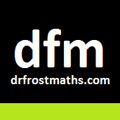This ratio and proportion resource includes:
- Methods for solving problems involving direct and indirect proportion, including the unitary method (but not quadratic/cubic/root relationships)
- Problems involving ratio
- Extension: 3-way relationships, eg ‘If it takes a men b hours to dig c holes…’
What are ratio and proportion?
In the maths curriculum, ‘ratio and proportion’ are key concepts that help pupils understand and solve problems involving relative sizes and quantities. A ratio is a way to compare two or more quantities by showing the relative sizes of each. For example, the ratio 3:2 indicates that for every 3 units of the first quantity, there are 2 units of the second. Ratios can be simplified in the same way as fractions, maintaining the same relationship between quantities.
Proportion refers to the equality of two ratios. When two ratios are proportional, it means they represent the same relationship. For instance, if 2/4 equals 3/6, these fractions are in proportion. Understanding proportion helps pupils solve problems where they need to find an unknown quantity in a set of equivalent ratios.
In KS3, pupils learn to apply these concepts in various contexts, such as scaling recipes, working with maps and models, and understanding real-world problems like financial calculations and physics problems involving speed, density, and more. Mastery of ratio and proportion builds a foundation for more advanced mathematical concepts and practical problem-solving skills, fostering a deeper comprehension of how quantities relate to each other in everyday situations.
KS3 maths curriculum area
Ratio and proportion, and rates of change
- Change freely between related standard units [for example time, length, area, volume/capacity, mass]
- Solve problems involving direct and inverse proportion, including graphical and algebraic representations
Dr Frost is a maths teacher working at Tiffin School in London. You can find all of his resources at his website drfrostmaths.com, a huge bank of PowerPoints, including worksheets and activities spanning Year 7 to Further Maths. Browse our maths question worksheets for Year 7, Year 8, Year 9 and GCSE maths.














